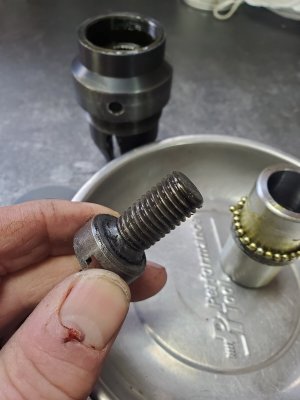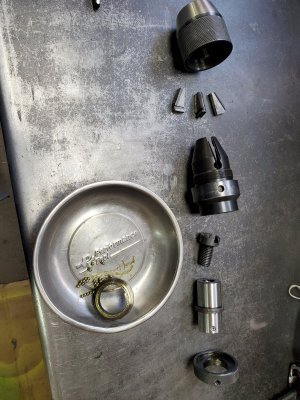I did the same as you a week or so ago, driving a 2" hole saw in 1" aluminum, got mine apart (after making a pin spanner !). Threads are buggered on the internal screw that opens / closes the jaws - basically ruined it.
Mine was a Rohm, don't remember what I paid for it but I don't think it was cheap.
Those are nice / convenient chucks, especially for tailstock of the lathe but I've come to the conclusion that they're not meant (not capable) of heavy duty work. Try to run a hole saw or a big drill in hard material and they seem to just wind themselves tighter and tighter until they strip / gall the threads of that internal screw.
One more lesson learned the hard way !
Mine was a Rohm, don't remember what I paid for it but I don't think it was cheap.
Those are nice / convenient chucks, especially for tailstock of the lathe but I've come to the conclusion that they're not meant (not capable) of heavy duty work. Try to run a hole saw or a big drill in hard material and they seem to just wind themselves tighter and tighter until they strip / gall the threads of that internal screw.
One more lesson learned the hard way !


